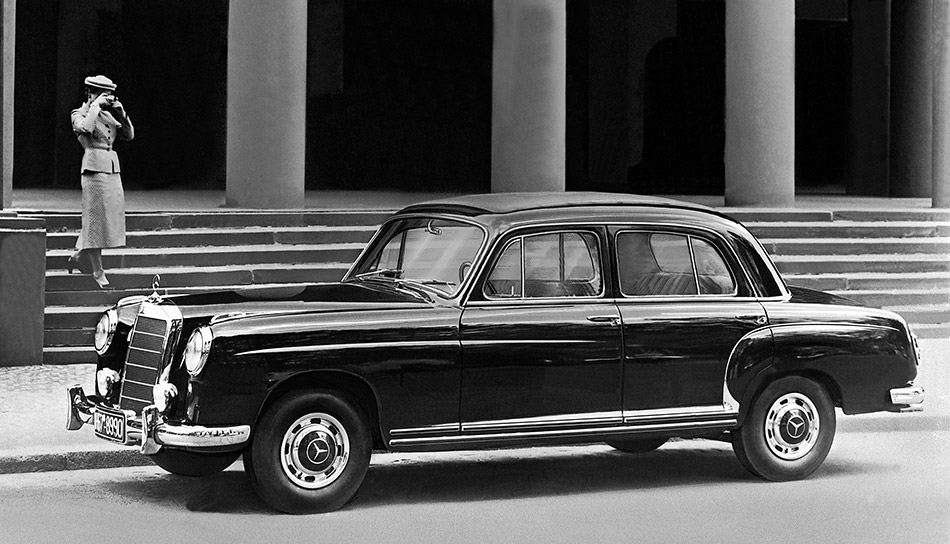In March 1954 Daimler-Benz introduced the new 220 model featuring a decidedly modern overall design. The six-cylinder model bore the internal designation 220 a or W 180 and now also boasted a self-supporting ponton-type body structure welded firmly to the frame floor/unit. The close kinship to the 180 model was also evident in the styling, although the slightly different proportions of the 220 a gave it a certain undeniable elegance. The convertible A and C variants were introduced in September 1955 and went into production barely a year later.
But the 220 a had a wheelbase that was longer by 170 millimetres, of which 70 millimetres went to improve legroom in the rear. The remaining 100 millimetres served to lengthen the front end, necessary to accommodate the vehicle's six-cylinder engine. The engine hood was drawn down around either side of the radiator grille to almost level with the bumper, and the fresh-air intakes were situated behind the standard mounted fog lamps. Unlike with the car's younger brother, however, the front turn indicator lamps were mounted in chromed housings positioned well forward on the fenders.
Improved handling characteristics
The front suspension and subframe concept were borrowed from the 180 model; the rear suspension on the other hand was a completely new design. The single-joint swing axle, which had a low pivot point and had been developed for the W 196 Formula One racing car, was now put into service for the first time in a Mercedes-Benz production passenger car. The longer control arms meant smaller track and camber changes on spring compression and thus improved handling.
The six-cylinder engine of the 220 a came from the predecessor model of the W 187 series, but with a number of modifications: Compression was increased, and thanks to a sharper camshaft and larger carburettor the unit was able to raise the power output to 85 hp (63 kW).
The brake system was improved considerably. Ribbed brake drums with "turbo cooling" were fitted to the 220 a on all four wheels and ventilation slits in the wheel rims and trims ensured an adequate supply of cool air. A brake booster was fitted as standard from September 1955.
Source: Mercedes-Benz















